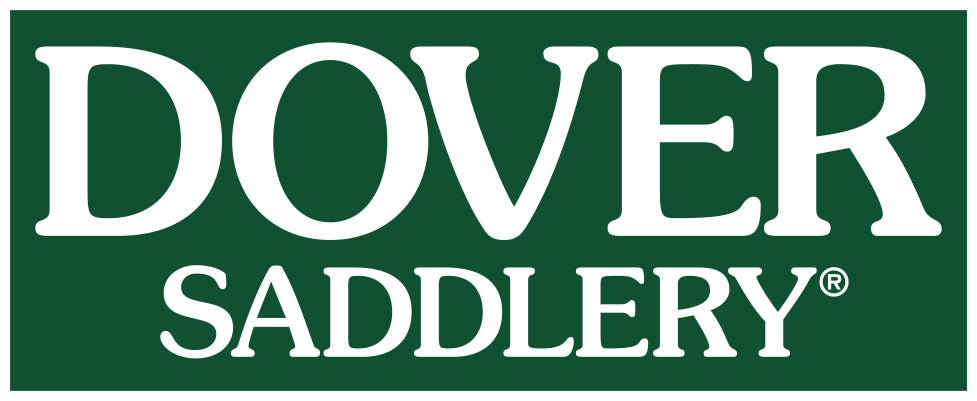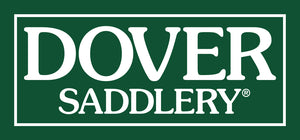
Saddle leather is made from a variety of animal hides. The hides are preserved through a process called tanning, during which a chemical (tannin) is usually applied to the hide. Many methods of tanning have been developed over the centuries. These processes are also used for leather in bridles, halters and other tack.
The most common tannins you'll hear about these days are vegetable-based, resulting from the bark of trees, wood or other plant parts, or chrome-based, where chromium salts are used. Other types of tannins exist, but are less commonly used. Color imparted to the hide during tanning varies depending on the process and tannin used. Dyes and pigments are often applied to leather later in the production process.
After tanning, hides may be split to obtain a material that can be crafted into useful products or apparel. If the top surface of a hide is of exceptional leather quality, meaning that it does not have much damage from insects, scars or brand marks, then it can be used as-is and is called full grain leather.
Full grain leather is the best leather quality because it has not been separated from the top grain or split layers, and is therefore the strongest and most durable type of leather. The grain remains intact, and the pores and patterns of the hide can be seen. As an example, pigskin leather is known for its deep hair follicle pattern, while buffalo leather is known for its pronounced patterning or sometimes pebbly appearance. Full grain leather is the most breathable type of leather, so you'll often find it in boots and saddles. When properly cared for, this type of leather will wear for a long time and develop a rich patina.
Top grain leather is made from hides that are considered to be too flawed to become full grain leather. It has had the split layer of the hide removed from it, leaving it softer and more pliable than full grain leather. The leather is then sanded or buffed to remove flaws. It may have a finish coat added to the surface, making it less breathable than full grain leather. The name "top grain" often confuses consumers as it makes this type of leather seem to be the "top quality." In fact, it is not the highest leather quality—full grain leather is. The grain in this type of leather may be "corrected," where imperfections in the hide are removed through sanding. Then an artificial grain is pressed into the leather and topped with a treatment of pigment or stain. Top grain leather is also used to create suede and nubuck.
Types of Leather in the Dover Saddlery Product Line
As you shop for tack and apparel, you'll come across a variety of terms used to describe the leather selected by manufacturers for their particular applications. Here are a few terms you'll see in the Dover Saddlery product line.
Bridle leather is a high leather quality that has gone through an intensive finishing process. Because the creation of bridle leather is expensive, only the best quality hides—those free of flaws and defects—are chosen to go through the process. Bridle leather is usually thoroughly impregnated with grease and finished with wax to give the leather a deep, even color and smooth finish.
Bridle leather is very soft and flexible, making it comfortable for the horse to wear next to the delicate skin on its face, yet it is very strong in its ability to handle the force of repeated use, sweat and dirt. Over time, bridles made with high leather quality only get better with proper cleaning and conditioning. Bridle leather is commonly used in higher-priced bridles; economy-priced bridles are not crafted of this type of leather.
Buffalo leather is long-wearing and offers extra grip due to its pronounced grain patterning.
Cabretta leather is created from sheepskin that had hair instead of wool.
Calfskin leather is very high quality, soft to the touch and provides a broken-in feeling even when new. The pattern on the young hide is so dense that it can appear to have almost no discernible grain. It is usually vegetable-tanned. You'll find calfskin used in items such as show boots and gloves and in parts of many saddles.
Deerskin leather is soft to the touch, supple, breathable and lightweight, yet it is highly durable. Some people believe that deerskin gets its durability from the evolution of deer hides to protect the animal while living in its natural habitat. Because of its unique properties and its ability to resist tears, deerskin is often used in full seat breeches or gloves.
Jupa leather refers to a durable cowhide with non-slip properties. It is used in the line of Passier dressage saddles.
Lambskin leather provides a luxurious feel. It is the softest and thinnest leather available, and its suppleness and smoothness is appreciated in the creation of gloves for competition. Its delicate nature does not lend well for heavy, daily use. Because there is almost no discernible pattern, lambskin leather can appear to have a subtle shine.
Nubuck is top grain cowhide that has been finely sanded on the outside surface. Sanding breaks the surface fibers, giving it a very slight nap that feels soft and velvety. You'll see nubuck used in clogs, boots and half chaps.
Patent leather has been given a high gloss finish and is coated with a very thin layer of lacquer.
Pigskin leather comes from pig or hog hide. Because it is both supple and quite durable, it is one of the most popular leathers for many applications. The hide is dense and tough, and with proper care it is long-wearing. Many crops, boots, saddles and gloves are crafted of pigskin.
Rolled leather, typically seen in high-end bridles, results from the process of sewing thin leather strips into a cylinder. The leather used to make rolled leather must be the softest available to allow for the tight rolling; lambskin or calfskin may be used. Many people feel the resulting cord of leather is longer-lasting and stronger when compared to strips of leather, and some also feel that the rolled design is more comfortable for horses to wear. Commonly, the throatlatches on leather halters are made with rolled leather. For comfort and strength, leather grab straps incorporate it as well.
Sheepskin leather is porous and soft. It can be made from hides of sheep that have either wool or hair.
Suede is similar to bridle leather in that it is the result of a finishing process rather than a type of leather. Suede gets its soft nap through abrasion, such as sanding, that essentially roughens the surface fibers to create a soft, velvety nap. Top grain leather is made into suede. For its comfort and grip, you'll see suede in products such as chaps, half chaps and knee rolls on saddles.



